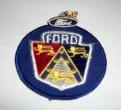|
Author
|
Message
|
|
DANIEL TINDER
|
|
|
Group: Forum Members
Last Active: 8 days ago
Posts: 1.7K,
Visits: 154.2K
|
I suspect the lack of valve seat cushioning (modern unleaded fuel) means that those running original/unaltered iron heads, low axle ratios (no OD), at mostly interstate speeds need to adjust more often, since seat recession will close up the lash (?).
6 VOLTS/POS. GRD. NW INDIANA
|
|
|
|
|
57RancheroJim
|
|
|
Group: Forum Members
Last Active: Last Year
Posts: 729,
Visits: 112.0K
|
I think I got in the habit of checking clearance more regularly back in the 60's when parts like rocker tips, rocker arm and shafts wore more from the fine oils like Quaker Sludge etc. we had. With more modern oils I find that changes due to ware are almost zero..
|
|
|
|
|
aussiebill
|
|
|
Group: Forum Members
Last Active: 5 Years Ago
Posts: 1.8K,
Visits: 11.4K
|
. Daniel, doesnt have to be an exact science to the written text. in my many yrs doing them, major variances in gaps is due to the wear on rocker tip, thus use pointy tip feeler guages, otherwise if perfectly flat?? the normal ones will do, and gaps can vary a little, and warm is better than cold.
 AussieBill YYYY Forever Y Block YYYY AussieBill YYYY Forever Y Block YYYY Down Under, Australia
|
|
|
|
|
DANIEL TINDER
|
|
|
Group: Forum Members
Last Active: 8 days ago
Posts: 1.7K,
Visits: 154.2K
|
Quote: (Ted): "Final valve adjustment should always be made with the engine hot".
All well & good in theory.
Maybe back in the day, when expert (experienced/fast with a feeler gauge) mechanics were working with unworn valvestems & rockers or fresh/unfatigued P&G gapper springs that allowed accurate lash measurement with the motor running. With older current shade-tree/amateur wrencher-owners who are unlikely to get the last few gaps adjusted properly before the valves have cooled/contracted, slow/precise cold measurement with a tested/proven hot/cold conversion chart would likely be more practical (?). Assuming of course, that someone actually bothered to take the time to measure/transpose/record each individual valve gap change (according to standardized temperatures/metallurgy/etc.), and age/wear didn't alter the conversion factors significantly, I'm betting the gap changes would be reliably predictable, or otherwise the principle behind bi-metal thermometers would be considered too erratic/invalid.
6 VOLTS/POS. GRD. NW INDIANA
|
|
|
|
|
57RancheroJim
|
|
|
Group: Forum Members
Last Active: Last Year
Posts: 729,
Visits: 112.0K
|
I must be anal LOL, I check mine every 10K but with three cars having solid lifters that isn't very often, it takes me years to get 10K on each..
|
|
|
|
|
Ted
|
|
|
Group: Administrators
Last Active: Yesterday
Posts: 7.5K,
Visits: 205.8K
|
Final valve adjustment should always be made with the engine hot. Revised or larger than stock cold settings will simply minimize the amount of change that must be made when adjusting the valve lash ‘hot’. As a general rule for iron headed engines, the exhaust clearance will tighten up more than the intake lash when going from cold to hot. With this happening, you could consider 0.001" looser for the intakes and 0.002" looser for the exhausts when doing the cold settings. The valve lash still needs to be checked with the engine 'hot' simply due to temperature variances that run throughout the cylinder heads. When all is right with the engine, valve lash adjustments should be infrequent. On my own ’55 Ford (272 powered) , I’ll check the valve lash when I change the spark plugs which is at each 40K-45K miles.
  Lorena, Texas (South of Waco) Lorena, Texas (South of Waco)
|
|
|
|
|
57RancheroJim
|
|
|
Group: Forum Members
Last Active: Last Year
Posts: 729,
Visits: 112.0K
|
As a general reply to the last two posts I feel the only proper setting is when HOT, I only mentioned .002 looser when cold as an initial starting point.
|
|
|
|
|
oldcarmark
|
|
|
Group: Forum Members
Last Active: Last Month
Posts: 3.7K,
Visits: 32.6K
|
Ted (7/11/2017)
As a repeat to what Jim has said, going from cold to hot has the valve adjustment clearance getting about 0.002” tighter for the iron headed Y engines. For the aluminum headed Y engines, the lash will become approximately 0.005” looser when going from cold to hot. Ok. So with a completely stock 292 with standard Iron Heads are you suggesting cold Clearance should actually be set at .021 cold and not .019? Thanks!
 
|
|
|
|
|
62bigwindow
|
|
|
Group: Forum Members
Last Active: Last Year
Posts: 884,
Visits: 14.3K
|
Is the cold adjustment a good way or is adjusting them hot the preferred method? Oregon cas recommended .021 for my grind. So if I set them at .023 will that work?
Durham Missouri
|
|
|
|
|
Ted
|
|
|
Group: Administrators
Last Active: Yesterday
Posts: 7.5K,
Visits: 205.8K
|
As a repeat to what Jim has said, going from cold to hot has the valve adjustment clearance getting about 0.002” tighter for the iron headed Y engines. For the aluminum headed Y engines, the lash will become approximately 0.005” looser when going from cold to hot.
  Lorena, Texas (South of Waco) Lorena, Texas (South of Waco)
|
|
|
|